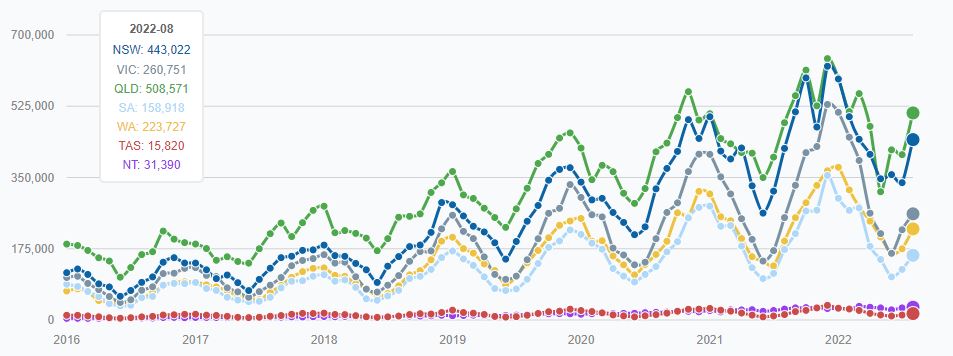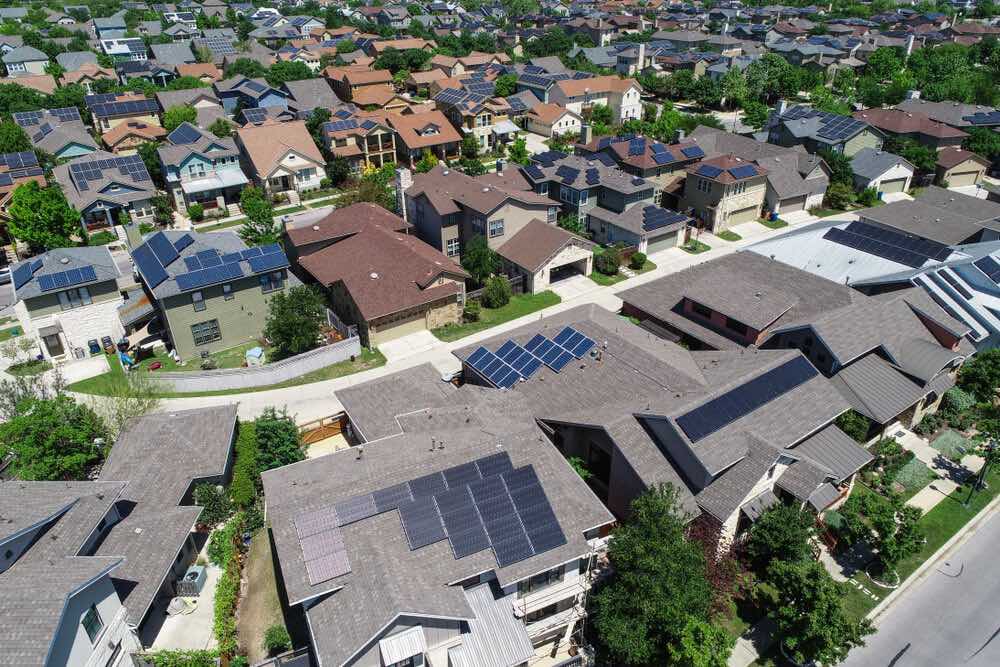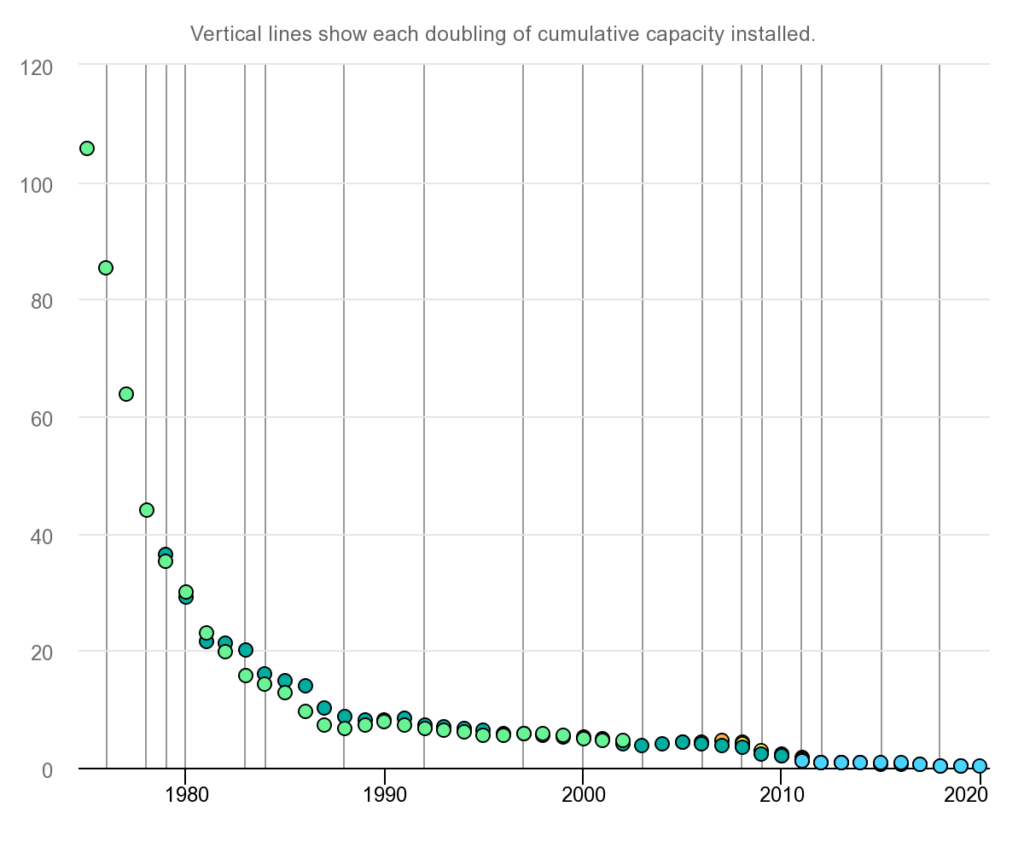The Australian solar power industry has had rapid growth in the last few years, and many households continue to install solar energy systems. This has caused many homeowners to look up “solar panel information by suburb”. Solar does not only benefit the environment but also lets you save electricity and lower your energy costs.
Before installing a solar energy system, it might be useful to find information about the resources of local solar energy where you live – and other relevant information. It is quite simple to look up solar panel information by suburb. You might also want to know what the solar panel rebate is where you live.
Let’s take a closer look at what solar information you can look up for your particular suburb.

First of all: How to look up solar information by suburb?
There are multiple websites and calculators online that can help you find solar information for your suburb, postal code or zone. You can also find useful information on the website of the Australian Government Clean Energy Regulator, however, this website is not super user-friendly to use.
By checking out information in advance, it might be easier for you to make sure a solar system is the right solution for you. Also, many websites offer a free service where you can look up solar panel information by suburb or postcode.
Useful solar information related to your suburb
In many online databases, you can find a lot of useful statistics and information about installing solar energy systems in different Australian suburbs or towns. It is also possible to find information on a more general or national level.
Besides information about the solar rebate you can receive in your area, you will find useful data about things like…:
- Local solar energy system resources
- Finding details about electricity value or generation in the area
- System requirements at your location
- Expected performance and system output where you live
- The optimal orientation and angle of the solar panel at the location
- Finding trusted solar panel system installers in your area
- Your estimated carbon offset compared to the average Australian
For detailed information on your suburb, start by selecting your state

Can I find my solar rebate and STCs if I look up solar panel information by suburb?
Private households and businesses in Australia may be able to receive financial incentives when installing a solar power system, thanks to the Small Scale Renewable Energy Scheme. The latter is also known as SRES and can cover some of your costs related to solar power installations.
SRES is a scheme initiated by the Australian Government Clean Energy Regulator, which is responsible for reducing carbon emissions across the country.
Besides solar photovoltaic panels, SRES might cover the financial costs of installing other small-scale renewable energy systems. This includes hydro systems, air source heat pumps, wind turbine systems and similar.
However, the size of the incentive will vary based on both the size of the solar system and your location. To help calculate how much financial support you will get, you can use our STC solar rebate calculator.
STC rebate explained
When you install a system eligible for SRES, you will get STCs or Small Scale Technology Certificates. STCs have a given value, and by assigning or selling them you can claim your residential solar rebate, however, almost every solar system installed in Australia applies the STC solar rebate as a point-of-sale discount.
To receive the point-of-sale discount, you can assign your certificates to the installer of the solar systems. This means that the solar installer claims the solar rebate on your behalf and is paid directly. This is a bit analogous to how Medicare works with some doctors.
What amount of STCs will I receive?
Easily explained – the more STCs you have, the more financial support you will get. The exact number of Small Scale Technology Certificates that will be created when installing the system is based on two different factors:
- Your suburb in Australia
- The size of your solar system in kiloWatts
Look up solar information for your suburb to find the solar government rebates in your area. The different zones are usually defined by postcodes. The size of the solar system you choose is also relevant. The more energy generated by your rooftop solar system as deemed by the Government, the more STCs you will get.
Here is a link to a handy calculator to calculate your STC quantity and solar rebate.

Why install a solar system?
By installing a solar system, you can reduce your carbon footprint and at the same time reduce your electricity costs. But there are also many other reasons for installing a solar system.
First of all, the price of solar panels has dropped dramatically in the last few years. This makes the system more affordable for regular Australians. Since 2009, the cost has been reduced by over 80%*.
It is also worth knowing that Australia in general is a very sunny country, which makes solar panels very effective. The large amount of sunlight makes it possible for the average household to produce about 3000 kWh a year.
And despite the costs of installing a solar panel system, you can expect to save a lot of money in the long run. Solar panel systems in general are a smart investment for most Australians.
Do you have any questions about why and how you should look up solar information by suburb? Feel free to contact us!
*IEA, Evolution of solar PV module cost by data source, 1970-2020, IEA, Paris https://www.iea.org/data-and-statistics/charts/evolution-of-solar-pv-module-cost-by-data-source-1970-2020